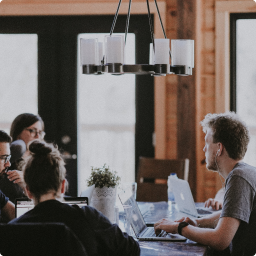The condition often referred to as alcoholic nose or alcohol nose is clinically described as rhinophyma. Rhinophyma is characterized by redness in and around the nose, along with the nose taking on an enlarged and lumpy appearance. While this condition can be triggered by alcohol abuse, it may also present in those who do not consume alcohol.
What is Alcoholic Nose?
The clinical alcoholic nose name is rhinophyma. The condition manifests as redness and a visibly bulbous nose, where the nose becomes larger, more prominent, and rounder in shape.
In some cases, though, rhinophyma can progress to more severe stages. The severity of the condition varies from person to person and can be influenced by various factors. Severe rhinophyma can lead to extreme distortion of the nose, giving it a disfigured appearance.
Chronic deformation of the nose can also lead to a narrowing of the nasal airways, resulting in breathing difficulties. Severe rhinophyma may also cause the nose to take on a purple-like hue – this is sometimes described as a red nose from alcohol.
There are many misconceptions surrounding rhinophyma, particularly the belief that it is solely caused by alcoholism, giving rise to terms like alcoholics nose and drinker’s nose. While these terms have been historically associated with rhinophyma, recent studies have revealed that alcoholism is not the sole cause of this condition – indeed, there is no clear trigger for the condition at all. Rhinophyma can equally occur in individuals who have limited alcohol consumption. These misconceptions can lead to embarrassment for those dealing with rhinophyma, as seeking medical treatment may cause them to be wrongly labeled as alcoholics or accused of having a drinking problem.
Alcoholism Nose Appearance
Alcoholism can have visible effects on a person’s appearance, including the nose. Rhinophyma is associated with the following distinctive symptoms:
- Red or purplish discoloration: One of the most noticeable signs of alcoholic nose is a red or purplish discoloration of the nose.
- Enlarged pores on the nose: Alcohol abuse can lead to enlarged pores on the nose.
- Lumps on the nose: The growth of extra connective tissue can result in lumps or bumps on the nose.
- Broken capillaries on nose: Alcohol abuse and rhinophyma can lead to damaged capillaries on the nose.
- Thickened skin: The skin on the nose may become thickened due to the effects of alcohol.
- Pitting or scarring: Alcoholism can contribute to pitting or scarring of the skin on the nose.
- Oily or dry skin: Changes in skin texture, such as increased oiliness or dryness, can occur.
These visible changes in the nose can lead to self-consciousness and discomfort for individuals with alcoholic nose. Seeking treatment for alcoholism and addressing the underlying causes of rhinophyma can help improve both physical and emotional well-being.
Why Does an Alcoholic Have a Red Nose Symptom?
The red nose symptom often associated with alcoholism is commonly referred to as alcoholic nose. However, this condition is medically known as rhinophyma, and it is not directly caused by alcoholism. Rhinophyma is primarily related to rosacea, a chronic skin condition that affects the blood vessels in the face.
The redness of the nose in rhinophyma occurs due to the dilation of blood vessels in the face, making them more visible and creating the appearance of broken blood vessels or spider veins. This redness is a prominent symptom of rosacea, and it contributes to the misconception that alcoholism directly causes the red nose.
While alcohol can inflame the redness and flushing associated with rhinophyma, it is not the root cause. Instead, rhinophyma is a rare and highly developed form of rosacea that affects the nose, leading to a large, bulbous nose shape, among other symptoms.

Treating Alcoholic Nose
Treatment for rhinophyma typically involves both surgical and medical approaches.
Surgical treatments
Surgery is the primary method used to address rhinophyma. Surgical techniques include:
- Laser resurfacing: This procedure helps improve the shape of the nose by using laser technology to remove excess tissue and reshape the nose.
- Dermabrasion: Dermabrasion involves using a spinning device to remove the top layers of skin, allowing for smoother skin to emerge.
- Excision: In some cases, a surgeon may use a small knife to shave off bulky tissue, accelerating the healing process and contouring the affected area.
- Grafting: Skin grafting may be necessary to achieve desired results, especially in severe cases.
Medical treatments
While surgery is the primary treatment, medical options can help manage symptoms like redness. These include:
- Topical medications: Prescription medications like ivermectin, brimonidine, and oxymetazoline can help relieve redness when applied to the affected area.
- Oral medications: In some cases, oral medications like aspirin, clonidine, and propranolol may be prescribed to manage symptoms.
Consult with a dermatologist or healthcare professional for an accurate diagnosis and to determine the most suitable treatment plan based on the severity of presentation.
FAQs
Why do alcoholics have purple noses?
The term alcoholic nose or purple nose alcoholic is commonly associated with a condition called rhinophyma, which can affect individuals who have a history of chronic alcohol abuse. That said, the condition is not directly caused by alcohol but rather by a combination of factors, including underlying health issues and genetics.
Can spider veins on nose come from drinking alcohol?
Spider veins on nose alcohol are clinically described as telangiectasia and can be caused by a variety of factors, including alcohol consumption. Excessive alcohol intake is one of the main contributors to the development of spider veins on the face. Other variables like aging, sun exposure, and skin condition may also lead to their formation.
Does alcoholic nose go away?
While reducing alcohol consumption and seeking medical treatment can help manage the symptoms of alcoholic nose, the condition itself may not completely go away. Treatment options, including surgery and medication, can help improve the appearance of the nose and alleviate symptoms, but a complete cure may not always be achievable.

Get Treatment for Alcoholism at Gratitude Lodge
Alcoholism is a chronic and relapsing condition, but it responds positively to evidence-based treatment. We treat all types of addictions including alcohol use disorder at Gratitude Lodge in Southern California.
Supervised medical detoxification allows those who are dependent on alcohol to withdraw with as little danger and discomfort as possible. Our alcohol detox program also serves as a bridge to ongoing treatment.
During residential rehab at our treatment facilities in Long Beach or Newport Beach, CA, you can access a personalized array of therapies that include:
- MAT (medication-assisted treatment)
- Psychotherapies
- Family therapy
- Group therapy
- Individual counseling
- Holistic therapy
- Aftercare and support
Call 800-994-2184 today and begin your recovery right away.




























